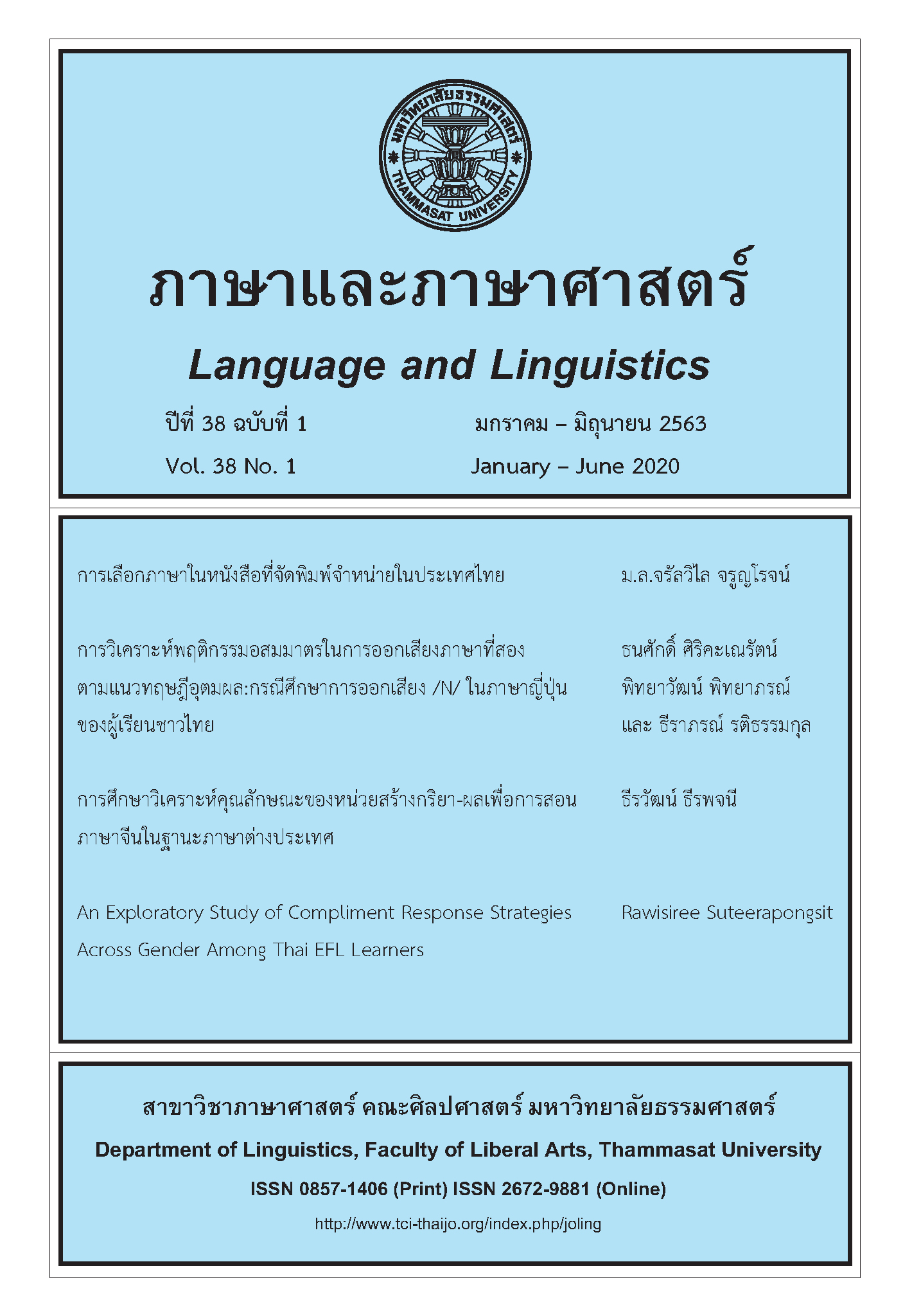การศึกษาวิเคราะห์คุณลักษณะของหน่วยสร้างกริยา-ผลเพื่อการสอนภาษาจีนในฐานะภาษาต่างประเทศ
Main Article Content
Abstract
Verb-resultative constructions (VRCs) in Mandarin Chinese are explained as basic general knowledge in textbooks or grammar texts. However, when learners have to read sentences or produce sentences that contain VRCs, they will encounter this problem. Since the VRC is a high frequency unit and has various implicative meanings, students may not be able to handle complicated usage using general knowledge. For this reason, there are many findings about VRCs from both a syntax and semantic perspective and these help to provide more understanding of their complicated usage. Nevertheless, those findings have not yet been used as feedback to improve teaching and learning. This research will analyze the characteristics of VRCs in related research and discuss the results in order to create a unified connection to propose explanatory guidelines of VRCs from the beginner level to the advanced level, thus facilitating learners to produce correct sentences themselves.
Article Details
บทความทุกบทความเป็นลิขสิทธิ์ของภาษาและภาษาศาสตร์
References
Basciano, B. (2010). Verbal compounding and causativity in Mandarin Chinese. (Doctoral dissertation, Università degli Studi di Verona). Retrieved from https://pdfs.semanticscholar.org/af1a/e2a1a0ab6c9cb39d319ef177e1444e4cf32e.pdf?_ga=2.122625421.703827725.1580612008-469045509.1580612008
Chang, J. (2001). The syntax of event structure in Chinese. (Doctoral dissertation, University of Hawaii). Retrieved from http://www.ccunix.ccu.edu.tw/~lngjhc/publishes/the%20syntax%20of%20event%20structure.pdf
Chao, Y. R. (1968). A grammar of spoken Chinese. Berkeley, CA: University of California Press.
Wang, L. (2001). A study of resultative constructions in Mandarin Chinese. (Doctoral dissertation). Retrieved September 25, 2019, from http://hdl.handle.net/10397/3251
Yin, H. (2010). The so-called Chinese VV compounds—A continuum between lexicon ad syntax. Proceedings of the 2010 Annual Conference of the Canadian Linguistic Association, Canada, 1-10. Retrieved from http://homes.chass.utoronto.ca/~cla-acl/actes2010/CLA2010_Yin.pdf


